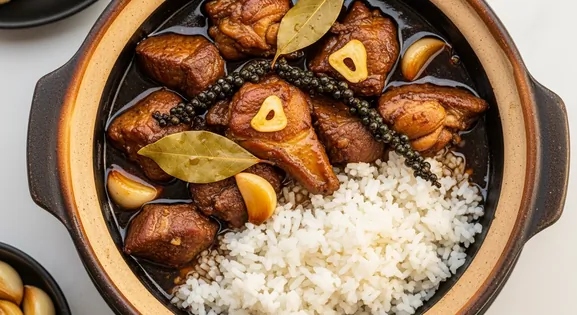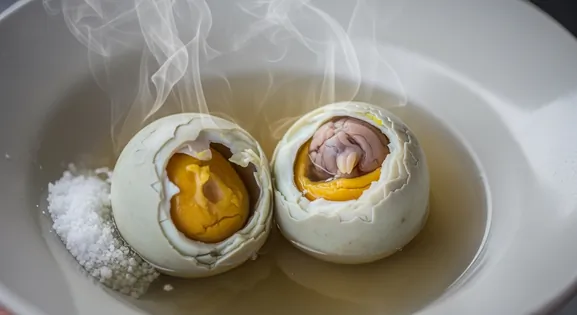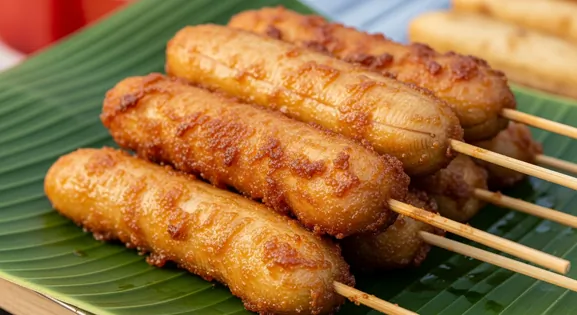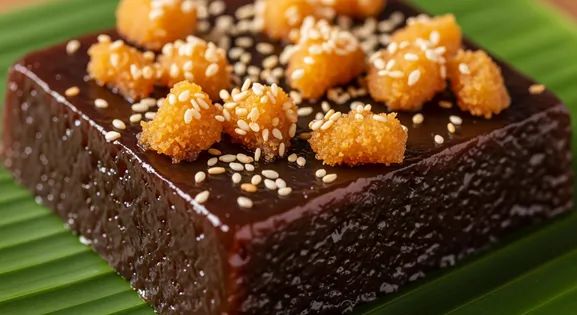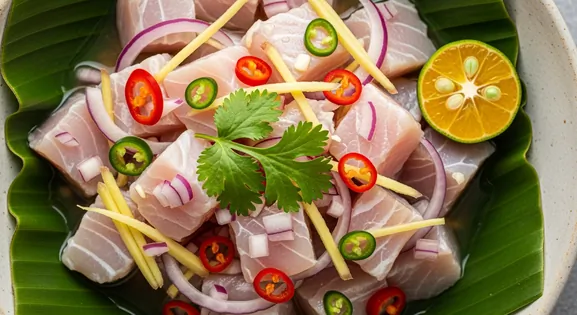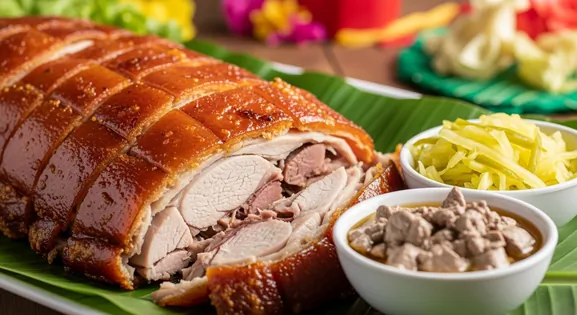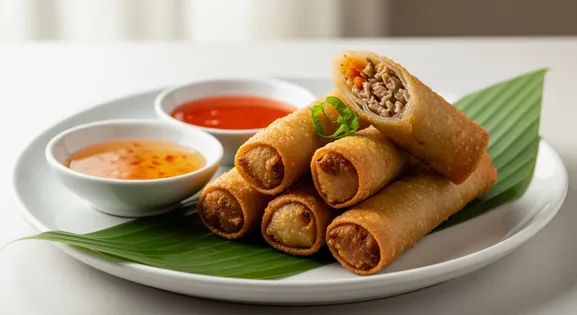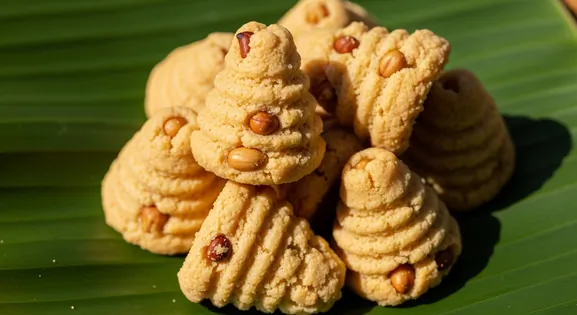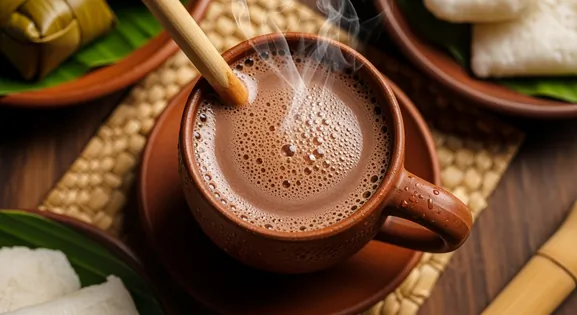Puto Maya in Philippines: A Complete Food Lover's Guide
Puto Maya
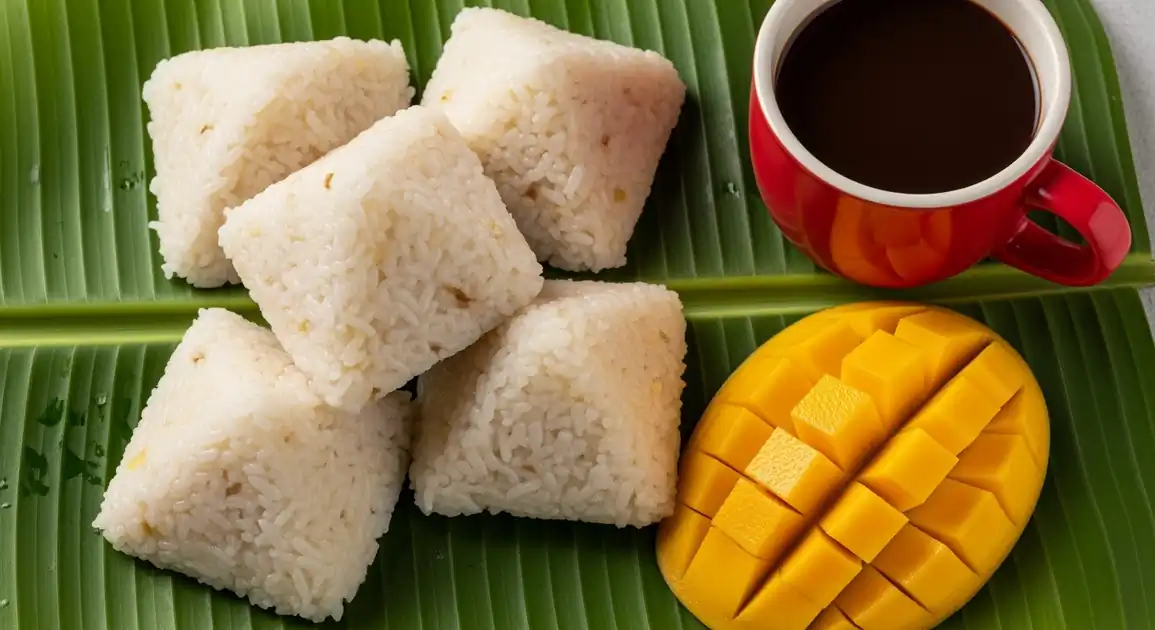
The Basics of Puto Maya
Puto Maya is a beloved Filipino rice cake from the Visayas region, particularly emblematic of Bohol province. Made from glutinous rice steamed with coconut milk, ginger, and sometimes pandan leaves, it forms a sticky, aromatic cake traditionally shaped into pyramids or rounds. This modest yet flavorful breakfast staple is characteristically served with sweet ripe mangoes and hot chocolate (sikwate), creating a harmonious blend of flavors, textures, and temperatures that showcases Filipino culinary ingenuity.
History and Origins
Puto Maya originated in the Visayas islands of the Philippines, with Bohol claiming it as a signature dish. While 'puto' generally refers to steamed rice cakes in Filipino cuisine (influenced by pre-colonial cooking techniques and trade with neighboring Asian countries), the 'maya' variant likely evolved from local preferences and available ingredients. The dish became a breakfast staple for farmers and workers, providing substantial morning energy through its carbohydrate-rich composition. Today, it's both an everyday breakfast food for locals and a cultural food experience actively promoted to tourists visiting Bohol.
Traditional Preparation Techniques
Authentic Puto Maya begins with glutinous rice (malagkit) soaked for several hours or overnight. The rice is then drained and mixed with coconut milk, salt, sugar, and finely sliced ginger. Some recipes add pandan leaves or extract for additional aroma. This mixture is steamed in a bamboo steamer (traditionally lined with banana leaves) for about 30-45 minutes until the rice is fully cooked and sticky. Once done, the rice is shaped into pyramids or rounded mounds, often using banana leaves as molds. The accompanying sikwate (hot chocolate) is made by dissolving pure tablea (Filipino cocoa tablets) in hot water or milk, then whisking until frothy.
Key Ingredients of Puto Maya
Glutinous Rice (Malagkit)
This sticky rice forms the base of Puto Maya, providing its characteristic chewy texture. It's soaked before steaming to ensure even cooking and optimal stickiness.
Quality indicator: Look for plump, unbroken grains that absorb moisture well.
Coconut Milk
Freshly extracted coconut milk imparts a rich, creamy flavor and contributes to the moistness of the rice cake. It's essential for the dish's signature aroma and taste.
Quality indicator: Quality coconut milk should be thick, opaque, and have a fresh, sweet aroma, not sour or watery.
Ginger
Finely sliced or grated ginger is a key aromatic, adding a subtle warmth and distinct, refreshing zest that balances the richness of the coconut milk.
Quality indicator: Fresh ginger should be firm, smooth, and pungent, with no soft spots or mold.
Local Puto Maya Variations in Philippines
Traditional White Puto Maya
The classic version made with white glutinous rice, coconut milk, and ginger, typically shaped into pyramids.
Purple Puto Maya
Made with black or purple glutinous rice, offering a nuttier flavor and striking purple-black color.
Pandan Puto Maya
Infused with pandan leaves or extract for a fragrant, slightly grassy flavor and natural green color.
Coconut-topped Puto Maya
Topped with freshly grated coconut, adding extra texture and a subtle sweetness.
Enhancing the Flavor: Classic Pairings
Ripe Mangoes
Fruit
Sweet, ripe mangoes, especially the Philippine Carabao variety, offer a juicy, tropical counterpoint to the savory-sweet Puto Maya, creating a classic flavor combination.
Sikwate (Filipino Hot Chocolate)
Beverage
A rich, thick hot chocolate made from local cocoa tablea, sikwate provides a comforting, slightly bitter, and deeply chocolatey beverage that perfectly complements the rice cake.
Spotting Quality: What to Look For
What to Look For
-
Freshly steamed puto maya with visible steam
Properly cooked puto maya should be steaming hot when served, indicating it's freshly made and has reached temperatures that kill potential pathogens.
-
Clean, covered containers or banana leaf wrapping
Quality vendors keep puto maya covered in bamboo steamers or wrapped in banana leaves, protecting it from contamination and preserving moisture.
-
Moist, sticky texture with visible ginger pieces
Good puto maya should be sticky and moist, not dry or crumbly. Visible ginger pieces indicate authentic preparation.
-
Vendors who prepare fresh batches throughout the morning
The best vendors make multiple small batches rather than one large batch that sits all day.
What to avoid
-
Dry, cracked surface or hardened texture
Indicates the puto maya is old, dried out, and potentially unsafe as it's been sitting out too long.
-
Room temperature puto maya with no reheating option
Freshly made puto maya should be warm. Room temperature offerings that aren't freshly made could harbor bacteria.
-
Discolored or yellowed appearance
Natural puto maya should be white to slightly off-white. Yellowing indicates aging or improper storage.
-
Strong sour smell or off odors
Fermentation can occur if left too long at room temperature. Good puto maya should smell primarily of coconut and ginger.
Explore Puto Maya in Detail: City Guides
Discover where to find the best Puto Maya and learn local tips in these cities:
Dietary Information
Dietary Information
Important Note for Travelers: Your safety is our priority. Below are the common allergens associated with the traditional preparation of this dish. However, recipes and ingredients can vary significantly between establishments. Always confirm all ingredients directly with the food vendor before ordering, especially if you have a severe allergy.
Potential Allergens
Dietary Suitability
How to Order Puto Maya
Frequently Asked Questions about Puto Maya
What is Puto Maya?
Puto Maya is a traditional Filipino rice cake from the Visayas region, especially popular in Bohol. It's made from glutinous rice (malagkit) soaked then steamed with coconut milk, ginger, and sometimes pandan leaves. The rice is formed into pyramid or rounded shapes and traditionally served with ripe mangoes and hot chocolate (sikwate). It's commonly eaten for breakfast or as a midday snack.
How does Puto Maya taste?
Puto Maya has a subtly sweet, aromatic flavor with prominent notes of ginger and coconut. The glutinous rice gives it a sticky, chewy texture. It's typically not very sweet on its own, which is why it pairs perfectly with sweet ripe mangoes. The combination with hot chocolate (sikwate) creates a delightful contrast of flavors and temperatures.
Is Puto Maya safe to eat from street vendors?
Puto Maya is generally safe to eat from street vendors because it's thoroughly cooked through steaming, which kills most harmful bacteria. Look for vendors with clean setups, who keep the puto maya in covered bamboo steamers until serving, and have high customer turnover. The best time to get it is in the morning when it's freshly made. Avoid puto maya that looks dry or has been sitting out uncovered.
Is Puto Maya vegetarian or vegan?
Puto Maya is vegetarian, made from glutinous rice, coconut milk, and ginger. Traditional recipes may not be vegan due to butter, but many versions can be. The accompanying hot chocolate (sikwate) might contain dairy. Vegans should inquire about ingredients and preparation to ensure it meets their dietary needs.
Is Puto Maya gluten-free?
Yes, Puto Maya is naturally gluten-free as it's made from glutinous rice (which, despite its name, contains no gluten), coconut milk, and spices like ginger. However, if you have celiac disease or severe gluten sensitivity, you should confirm that no wheat-based ingredients were added and that there was no cross-contamination during preparation.
What is the best way to eat Puto Maya?
Enjoy Puto Maya warm, paired with sweet ripe mango slices and a cup of hot chocolate (sikwate). Take a bite of the rice cake, then mango, for a balanced flavor. Sip the hot chocolate between bites to enhance the experience. Some locals add sugar or grated coconut.
Expert How-To Guides about Puto Maya
How to Spot Fresh Puto Maya
Learn to identify freshly made, quality puto maya from vendors by observing key visual, textural, and aromatic cues, ensuring a safe and delicious experience.
- Look for vendors actively steaming rice in bamboo steamers (especially in the morning).
- Check that the puto maya is moist and slightly shiny on the surface, not dry or cracked.
- The rice cake should be warm to touch and soft when pressed gently.
- Quality puto maya will have a noticeable fragrance of ginger and coconut.
- The color should be white to off-white (or purple if using black rice variety), not yellowed or discolored.
- Vendors with high turnover and locals waiting in line typically offer fresher products.
How to Enjoy the Complete Puto Maya Experience
Follow the traditional way of eating this Boholano specialty, combining its unique flavors and textures with classic pairings for a truly authentic and enjoyable experience.
- Order a complete set: puto maya, sliced ripe mango, and hot chocolate (sikwate).
- Start by taking a bite of the warm puto maya, appreciating its ginger-coconut aroma.
- Follow with a piece of sweet mango – the contrasting flavors and textures are essential to the experience.
- Take a sip of hot sikwate between bites to warm your palate and add richness.
- Add a sprinkle of sugar or desiccated coconut on top if you prefer it slightly sweeter.
- For the most authentic experience, eat it in the morning when freshly made.
Our Commitment to Quality
At Tasteplorers, our mission is to provide the most accurate and useful travel information in the world. To achieve this, all content on this site is created through our unique editorial framework. We utilize leading AI research tools, guided by our proprietary prompts, and a multi-stage validation process. This entire system is overseen by our editorial team to ensure everything we publish meets our high standards for accuracy, cultural nuance, and practical value for travelers.
Learn more about our Editorial Process and our Mission.
Countries
Explore regions
Europe
Discover Europe's diverse culinary landscape, from Mediterranean flavors to hearty Alpine fare. Learn to navigate markets, decode menus, and eat like a local.
Latin America & Caribbean
Discover the vibrant cuisines of Latin America & the Caribbean. Our expert guide covers everything from Mexican street food to Peruvian ceviche and market tips.
Oceania
Explore Oceania's diverse food scene. Learn about Polynesian earth ovens, Fijian feasts, and the vibrant café culture of Australia and New Zealand.
Southeast Asia
Explore Southeast Asia's diverse food cultures from Thailand to Vietnam. Get expert tips on navigating spice levels, choosing quality vendors, and understanding the rich traditions of the region.
